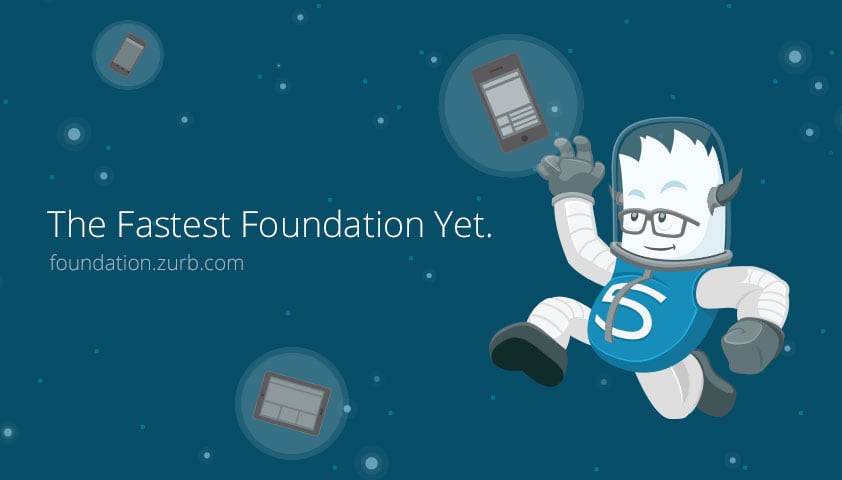Today, the California-based product design team at ZURB announce the release of Foundation 5, the responsive web design framework that’s been adopted by millions of designers and engineers.
Designers have loved previous versions of Foundation for its mobile-first attitude and great documentation. Now a ton of features have been added and existing ones streamlined to make the framework faster, smarter and easier to learn.
“Front-end frameworks have reached the point where the next logical step is to work on efficiency and speed,” says Jonathan Smiley, a Partner at ZURB. “With Foundation 5 we wanted to pay a lot of attention to that, so we have an even better, leaner starting point for the next version.”
Here’s a rundown of what’s new and what’s improved from the ZURB team:
Faster to learn
Foundation’s documentation has gotten a huge upgrade. There are more and better code examples, plus whole new sections so you can dig as deeply as you like.
A new “Getting Started” guide will help new users quickly figure out how to fit the Foundation framework into their workflow.
“Getting Started” videos have also been added.
Connect with the Foundation community to get answers and share knowledge on a dedicated Foundation Forum.
Faster to code
Foundation now has its own command line tool, plus it will use Libsass, a back-end Sass compiling library that will accelerate your SCSS changes by a whopping 5x.
The team has also created its own CLI wrappers: just type ‘foundation new project-name’ and you’re off!
New components will drastically shave off even more of manual work you need to do. For example, they’ve added a medium grid that ends the need for custom breakpoints and media queries.
The new release comes with brand new templates.
With Foundation Business, you can upgrade to get professional support, consulting, tools and training.
Faster for site users
The Interchange plugin, which has allowed you to deliver different images to different devices, is now even more powerful. You’ll be able to deliver entirely different sections of the page depending on device type.
Users will experience smoother animations and transitions as the result of Foundation’s robust support for hardware acceleration.
The base visual style is simpler, cleaner and sexier — and quick and easy to restyle.
This is a major upgrade. Current Foundation users will find that lots of wishes have been granted. The framework remains highly responsive, Rails-friendly (but use it with any back-end) and is now more accessible than ever (fully 508 compliant).
If you’ve been waiting to check out Foundation, this may be the version that gets you going.
Are you a Foundation user? Which of the new features are you most excited to see? Let us know in the comments.
